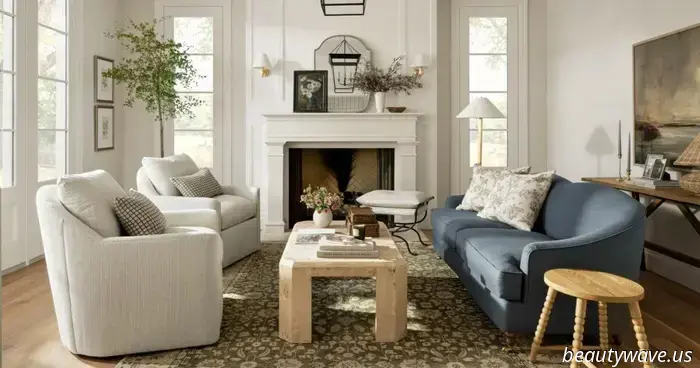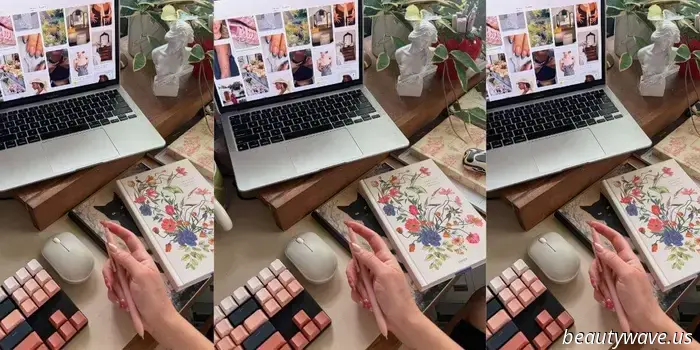
10 Decorating Guidelines Designers Urge You to Adhere To—And 6 You Can Completely Overlook
Rules are established to provide organization and consistency, and the same applies to interior design. Interior designers and other professionals adhere to specific guidelines to ensure their designs are visually appealing and well-balanced. By following a few established interior design rules, they can work effectively while still incorporating their own creativity to achieve beautiful results. Fortunately, for those of us without formal design education, it’s fairly easy to apply these interior design principles when decorating our own homes.
By considering a few guidelines, you can reduce the uncertainty involved in creating a beautiful and thoughtfully decorated home. However, for every strict rule to follow, there’s typically one that can be disregarded. To help you distinguish between the two, we’ll explore which interior design rules are important to follow and which ones you can overlook when decorating your home.
Essential Design Rules to Follow
Here are the crucial interior design rules that designers encourage you to follow when decorating your space:
1. Consider proportions
The proportions of a room and its furnishings are perhaps the most crucial aspects to consider when decorating. You want to avoid an overcrowded room filled with furniture that overshadows the space, or a room decorated with pieces that appear too small for it. Striking a balance requires attention to the size of your furnishings and their relationship to the overall room size. Large rooms benefit from big furniture, while smaller spaces require smaller pieces. Additionally, ensure your furnishings are proportionate to each other—for example, a large, overstuffed sofa should not be paired with a small, flimsy coffee table.
2. Mind the traffic flow
The spacing of your furniture is another important factor. Your arrangement should allow for comfortable movement within the space. For example, while you want easy access to a drink on your coffee table, it should not be so close to your couch or chair that navigating between them feels cramped. Consider how you move through the space as you select and arrange furniture for natural traffic flow. If it seems overly tight or requires significant stretching, adjustments are likely needed.
3. Adhere to the rule of three
The rule of three is more of a guideline than a strict rule, but it’s beneficial to keep in mind. This principle suggests that grouping objects in threes (or other odd numbers) tends to create a more harmonious and visually appealing aesthetic. This guideline applies to various arrangements, whether you’re styling accessories on a shelf, designing a gallery wall, or layering pillows on a couch. Groupings of odd numbers create a balanced and dynamic look that is often more engaging than symmetrical designs.
4. Measure everything twice
Accurate measurements are essential in the interior design process. Before buying any furniture, measure your room and the dimensions of the items you’re considering. For extra assurance, use painter’s tape to mark where you plan to place the furniture on the floor. This visualization aids in understanding the proportions of your layout before finalizing a purchase.
Likewise, measure (twice for precision) for items like window treatments, artwork, shelving, and any other decor where size is crucial. Many decor pieces need adequate spatial relationships to appear proportionate and visually pleasing.
5. Layer textures
Incorporating a mix of textures is vital for preventing your space from feeling flat or monotonous. Accent pillows, throw blankets, lampshades, and even plants can introduce interesting textures to a space without a significant investment. For even more contrast, consider combining different fabrics for your furniture, such as a velvet sofa paired with a leather chair, or incorporating pieces made from various materials, like a wooden coffee table alongside glass side tables.
6. Choose the right rug size
A rug that is too small can make a room appear awkward. Interior design guidelines suggest that all furniture in a space should fit comfortably on the rug, or at least the front legs of each piece should rest on it. An exception applies to dining tables and chairs, where it’s important to leave ample space between the furniture and the rug’s edge to avoid the chair legs getting caught. If you’re unsure about whether a rug is too small, it’s likely that a larger size would be more suitable.
7. Master the art of hanging curtains
Hanging curtains is more intricate than simply mounting a rod. The curtain panels should either just touch the floor or slightly puddle at the bottom. The rod itself should be positioned in a way that doesn’t crowd the window casing; in fact, placing it closer to the ceiling creates the illusion of height. As for the number of curtain panels, they should not hang flat when closed. A useful guideline is that the width of curtain panels should be one-and-a-half to two times the width of the window.
8. Diversify your lighting
Lighting can significantly enhance the atmosphere of a space, which is why incorporating multiple lighting sources in any room is essential. Alongside natural light from windows or skylights, add various light fixtures in different forms. Consider a distinctive overhead light fixture, a floor lamp in an empty corner, accent







Other articles
 Seen at Cannes: The Effortless Summer Bob Trend That Everyone Fashionable Is Obsessed With
Ideal for hot weather.
Seen at Cannes: The Effortless Summer Bob Trend That Everyone Fashionable Is Obsessed With
Ideal for hot weather.
 18 Mid-Tier Brands That Offer Luxury Without the Designer Cost
editor's picks for a reason
18 Mid-Tier Brands That Offer Luxury Without the Designer Cost
editor's picks for a reason
 It's True: Your Vacation Capsule Wardrobe Only Requires These 20 NET-A-PORTER Items.
Packing has never been simpler.
It's True: Your Vacation Capsule Wardrobe Only Requires These 20 NET-A-PORTER Items.
Packing has never been simpler.
 The Summer Slowdown Will Stop Recruitment—Here’s How to Secure a Job Before It Happens
The summer lull will pause nearly all recruitment activities. Here’s how you can secure a position before HR and hiring managers take time off this summer.
The Summer Slowdown Will Stop Recruitment—Here’s How to Secure a Job Before It Happens
The summer lull will pause nearly all recruitment activities. Here’s how you can secure a position before HR and hiring managers take time off this summer.
 22 Light Lunch Recipes to Avoid the Mid-Afternoon Slump
To alleviate the dreaded afternoon slump, we've compiled 22 of the best light lunch recipes that will keep you satisfied and attentive for the remainder of the day.
22 Light Lunch Recipes to Avoid the Mid-Afternoon Slump
To alleviate the dreaded afternoon slump, we've compiled 22 of the best light lunch recipes that will keep you satisfied and attentive for the remainder of the day.
 This 4-Step Detox Can Assist You in Overcoming Your Aversion to Your Task List.
If you're getting ready for a job change or seeking motivation to overcome a lull, a career detox might be the transformation you're looking for.
This 4-Step Detox Can Assist You in Overcoming Your Aversion to Your Task List.
If you're getting ready for a job change or seeking motivation to overcome a lull, a career detox might be the transformation you're looking for.
10 Decorating Guidelines Designers Urge You to Adhere To—And 6 You Can Completely Overlook
We analyze the interior design guidelines that you should follow and those that you can completely overlook when planning and arranging your home.
